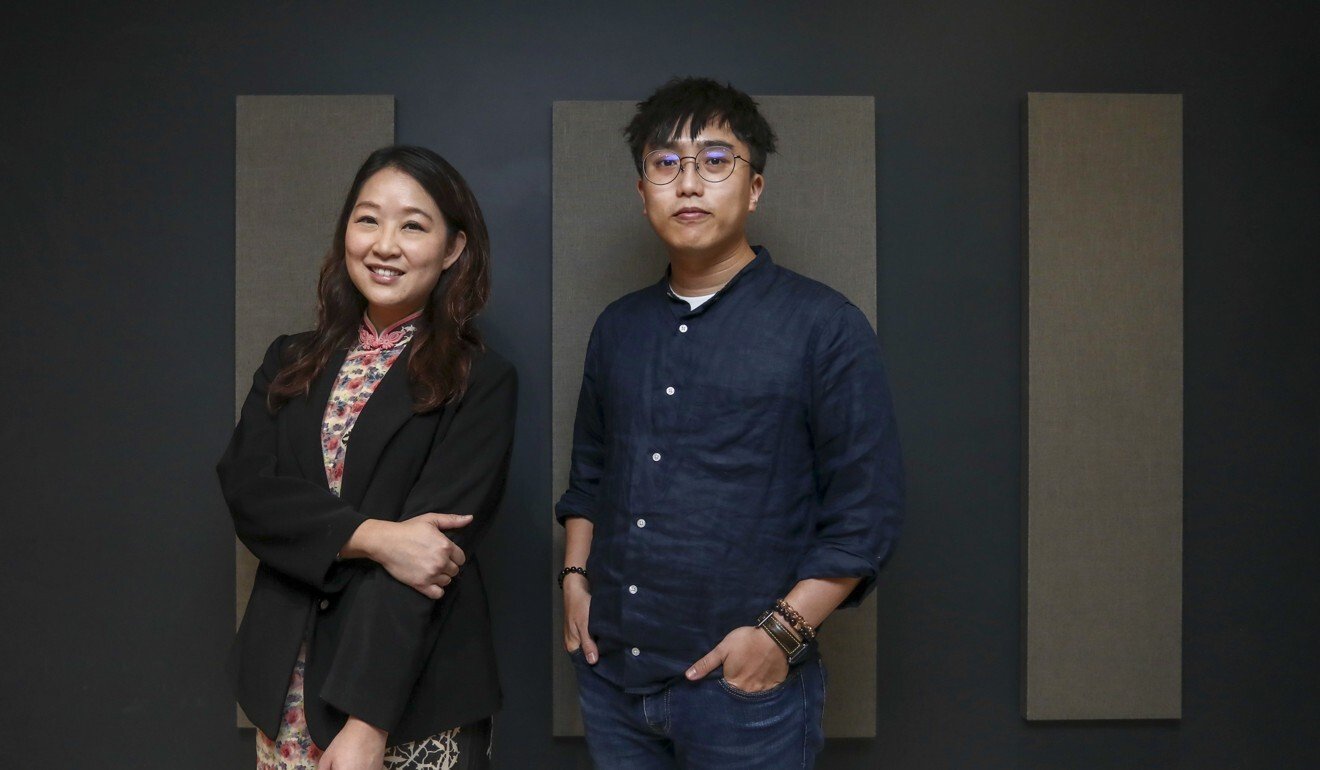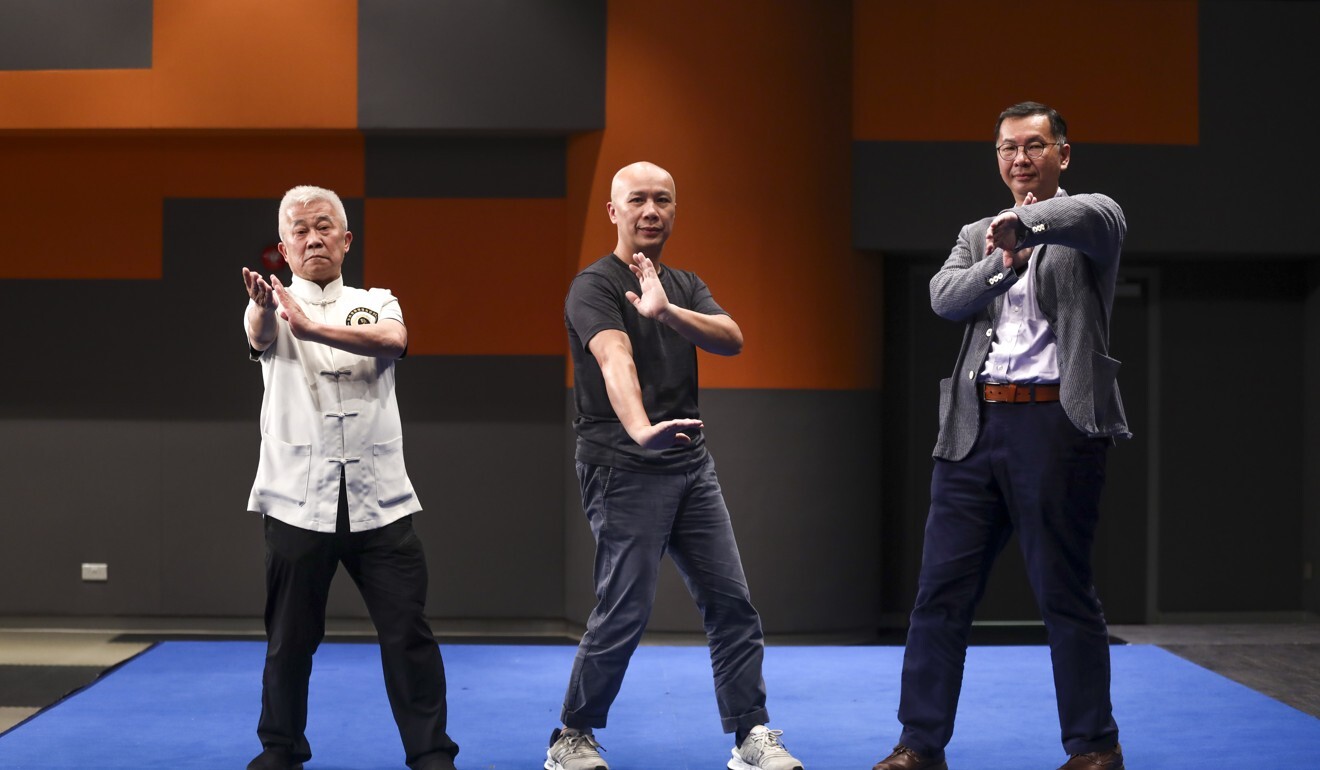
Ip Man goes AI: team at university in Hong Kong develops software to teach martial arts legend’s wing chun moves
- Shue Yan University project taps martial arts experts to develop AI software for schools
- Wing chun enthusiasts hope project will revive interest in history, culture of martial art form
A Hong Kong university research team is using artificial intelligence to develop a way to teach the Chinese martial art of wing chun, and keep alive the legacy of legendary grandmaster Ip Man.
His grandson, Ip Kong-chiu, a grandmaster himself, will demonstrate the movements of the martial art’s first form, Siu Nim Tau, which will then be turned into software to teach primary and secondary school pupils.
The year-long project is the idea of wing chun enthusiast Kaman Lee Ka-man, head of the department of journalism and communication at Shue Yan University.
She and part-time lecturer Sin Ho-yin will track Ip Kong-chiu’s movements digitally and, by using a technology called skeleton-based action recognition, will produce the AI-based lessons.
When pupils use the software to learn wing chun, their attempts will be tracked and assessed, and they will receive guidance too.

About 1,380 children from more than 20 primary and secondary schools in Hong Kong will be taught with the software, and wing chun masters in the city will be invited to hold workshops to tell them about its origins and history.
“The aim is to encourage youngsters to learn about wing chun, not only the skills but also its culture and history,” Lee said. “It is also a breakthrough that the masters are trying new, innovative ways to pass on the martial art.”
Ip Man is credited with bringing the wing chun style of kung fu, with its swift yet fluid hand movements and sturdy stances, to Hong Kong when he arrived in 1949 from Foshan, in Guangdong province.
By the time he died in 1972, he had trained thousands of students, the most famous of whom was the actor Bruce Lee. Ip’s two older sons, Ip Chun and Ip Ching, became exponents and grandmasters too.
How Ip Man’s son is carrying on his martial arts legacy at 95
Ip Man inspired several films, including a four-part series in which he was played by actor Donnie Yen Ji-dan. In other films, his role was played by Dennis To Yu-hang, Tony Leung Chiu-wai and Anthony Wong Chau-sang.
The box office success of the first Donnie Yen movie, in 2008, sparked a resurgence of interest in wing chun, which the Hong Kong government included among the city’s first intangible cultural heritage list in 2014.
Kaman Lee started learning wing chun in 2013 and was struck that students at the training centre – or dojo – came from diverse backgrounds but stayed focused on their martial art.
“People were not defined by their professions and education level or what watches, rings and jewellery they wore. All relationships were simply built through wing chun,” she said. “This is precious, especially in today’s Hong Kong.”
She spent eight years researching how wing chun skills were passed from father to son, and master to student, including the story of Ip Man’s sons, Ip Chun and Ip Ching, and four of his students. She published a book based on her research in August.

Lee Yuk-cheong, who began learning wing chun in 1996 and studied under Ip Ching, is now chairman of the Ving Tsun Athletic Association, which has about 4,000 masters.
He recalled Hong Kong’s wing chun mania that followed the Ip Man films, and days when every class in a 1,000 sq ft dojo would be packed with 50 to 60 students.
The martial art’s popularity has since died down, and few students these days practise as hard as in the past, when he and students like him spent seven to eight hours a day training.
“Chinese kung fu as a whole has only a small circle of practitioners, and the number of those practising wing chun is even smaller,” the 50-year-old said.
He has taught wing chun since 2003 in Hong Kong and in places such as Italy, Brazil, Singapore, Indonesia and Malaysia. His school in the city has about 20 to 30 students.
How Ip Man helped turn a rebellious young Hongkonger into a wing chun master
Caritas Chong Yuet Ming Secondary School principal Pang Yiu-kwan, 54, who learned under Ip Chun, called the martial art “an excellent way to promote culture”.
He started learning in 1989 and began teaching it in 1995. He said the culture and theories behind wing chun, including the relationship between master and student, were worth teaching in schools and universities.
He established the Wing Chun Martial Arts Society at the University of Science and Technology in 1995, and has taught it there. He also held interest classes about the wing chun culture for NGOs.
Pang, who is a consultant to the Shue Yan University AI project, said it would help pass on the wing chun legacy to younger generations.

02:10
Disciple of Wing Chun legend Ip Man keeps kung fu relevant
Leung Kum-tong, 79, who learned the martial art from Leung Sheung, Ip Man’s first student, now runs two wing chun schools in Hong Kong with students aged from four to their 80s.
He picked up wing chun in the 1960s for self-defence but, according to him, these days there are children who learn it to improve their concentration, the elderly want to keep fit and avoid injury, and women want to protect themselves.
He has also taken the martial art to elderly care homes, children’s centres and special education schools.
During the coronavirus pandemic, he recorded wing chun lessons for his students to practise at home and ran online classes too.
“I feel happy and touched to see wing chun help my students who then contribute to society,” he said.

